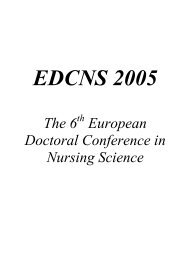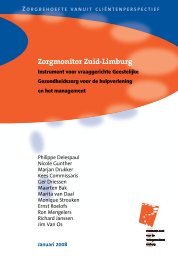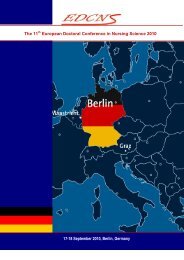Laurens van der Maaten MICC-IKAT, Maastricht University
Laurens van der Maaten MICC-IKAT, Maastricht University
Laurens van der Maaten MICC-IKAT, Maastricht University
You also want an ePaper? Increase the reach of your titles
YUMPU automatically turns print PDFs into web optimized ePapers that Google loves.
Fast and reliable coin<br />
classification<br />
<strong>Laurens</strong> <strong>van</strong> <strong>der</strong> <strong>Maaten</strong><br />
<strong>MICC</strong>-<strong>IKAT</strong>, <strong>Maastricht</strong> <strong>University</strong>
Introduction
Overview<br />
The challenge<br />
System overview<br />
Results<br />
Conclusions
The challenge<br />
Coins (300 tons): 698 coin classes with 2,070 different faces<br />
Classify 5,000 coins (= 10,000 coin images)<br />
Within 8 hours on desktop machine<br />
At least 70% correct<br />
Misclassifications very expensive<br />
Classification as unknown is allowed
The challenge
System overview<br />
Four main components<br />
Segmentation<br />
Feature extraction<br />
Classification<br />
Verification
Segmentation<br />
The extraction of the coin from its background<br />
at the bor<strong>der</strong> of a coin, there is an edge<br />
the magnitude of the <strong>der</strong>ivative of the 2D image function<br />
is relatively high at an edge<br />
we can estimate the <strong>der</strong>ivative and threshold it<br />
this is called edge detection
Segmentation<br />
The result of the segmentation:<br />
In addition, we check whether the segmentation is successful
Feature extraction<br />
Measure statistical properties of the coin image that are<br />
typical for this coin type<br />
The statistical properties allow us to discriminate between<br />
coins<br />
The discriminating feature of a coin is its stamp
Feature extraction<br />
Measure statistical distributions of stamp pixels over coin<br />
stamp pixels can be found by edge detection<br />
coin bor<strong>der</strong> edges are ignored
Feature extraction<br />
Edge distance distributions<br />
estimate distribution of<br />
distances of edge pixels<br />
to the center of the coin<br />
rotation invariant<br />
measured on multiple<br />
scales
Feature extraction<br />
Edge angle distributions<br />
estimate distribution of<br />
angle of edge pixels<br />
w.r.t. the baseline<br />
rotation invariance<br />
obtained by computing<br />
magnitude of Fourier<br />
transform
Feature extraction<br />
Edge angle-distance distr.<br />
incorporate both<br />
angular and distance<br />
information<br />
measured using 2, 4, 8,<br />
and 16 distance bins<br />
and 180 angle bins
Classification<br />
The feature vector can be consi<strong>der</strong>ed as a point in a high-<br />
dimensional space<br />
Points that are close together in the high-dimensional space,<br />
are likely to have the same class<br />
Classifiers employ this property to construct decision lines<br />
(i.e. lines that discriminate between coin types)
Classification<br />
Our classifier is trained on a trainingset of around 20,000<br />
coin images<br />
When an unlabelled coin image is input into the system, the<br />
classifier predicts the most likely class of the coin image<br />
The classifications of both coin sides are combined
Verification<br />
The classifier does not provide insight in the probability that<br />
its classification is true<br />
Because errors are expensive, misclassifications have to be<br />
eliminated<br />
This is done by a direct comparison of the coin images in<br />
or<strong>der</strong> to judge their similarity
Verification<br />
The coin is compared with the prototype corresponding to the<br />
classification<br />
This is done for all rotations of the coin
Results<br />
The system classifiers 81% of the coins correctly, while<br />
misclassifying only 0.3% of the coins<br />
The system uses approximately 2 seconds of computation<br />
time per coin image
Conclusions<br />
The system allows for automatic sorting of large amounts of<br />
European coins<br />
Future work: further reducing the amount of<br />
misclassifications<br />
Future work: classification of historical coins
Thanks<br />
Questions?






